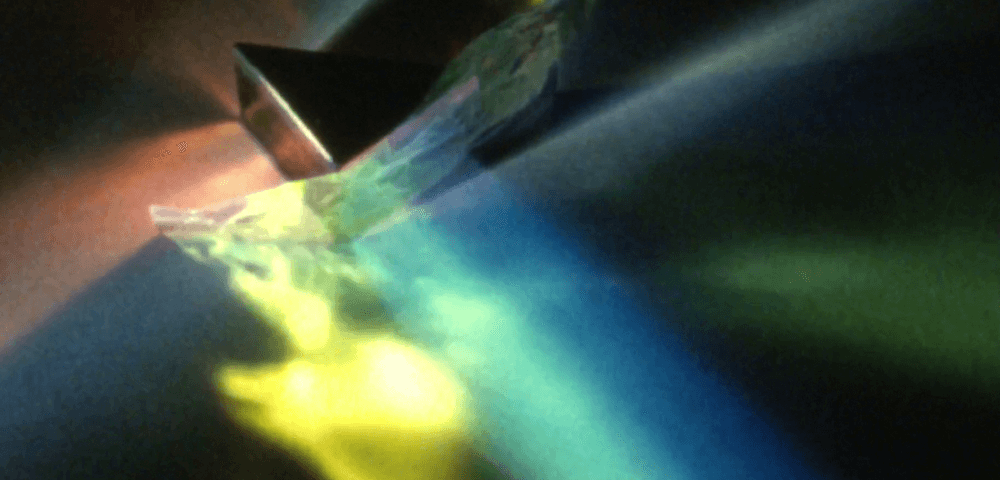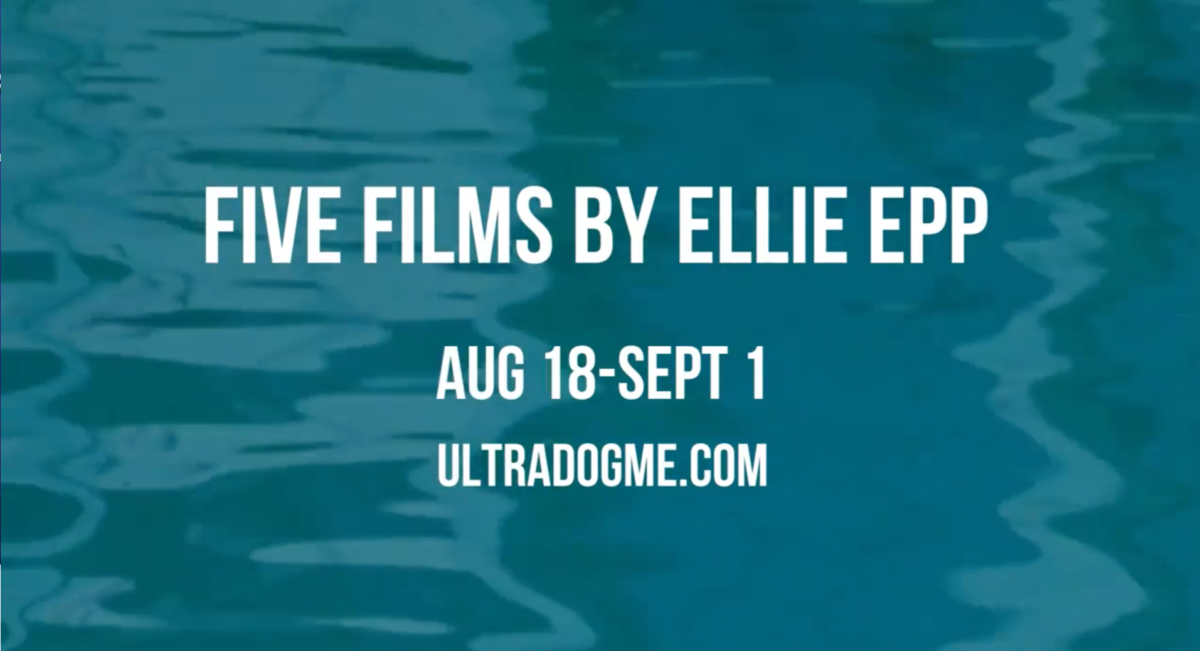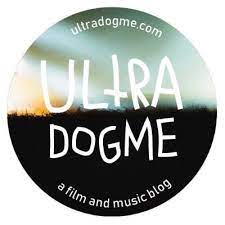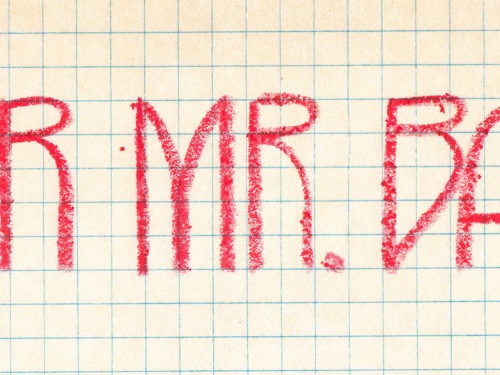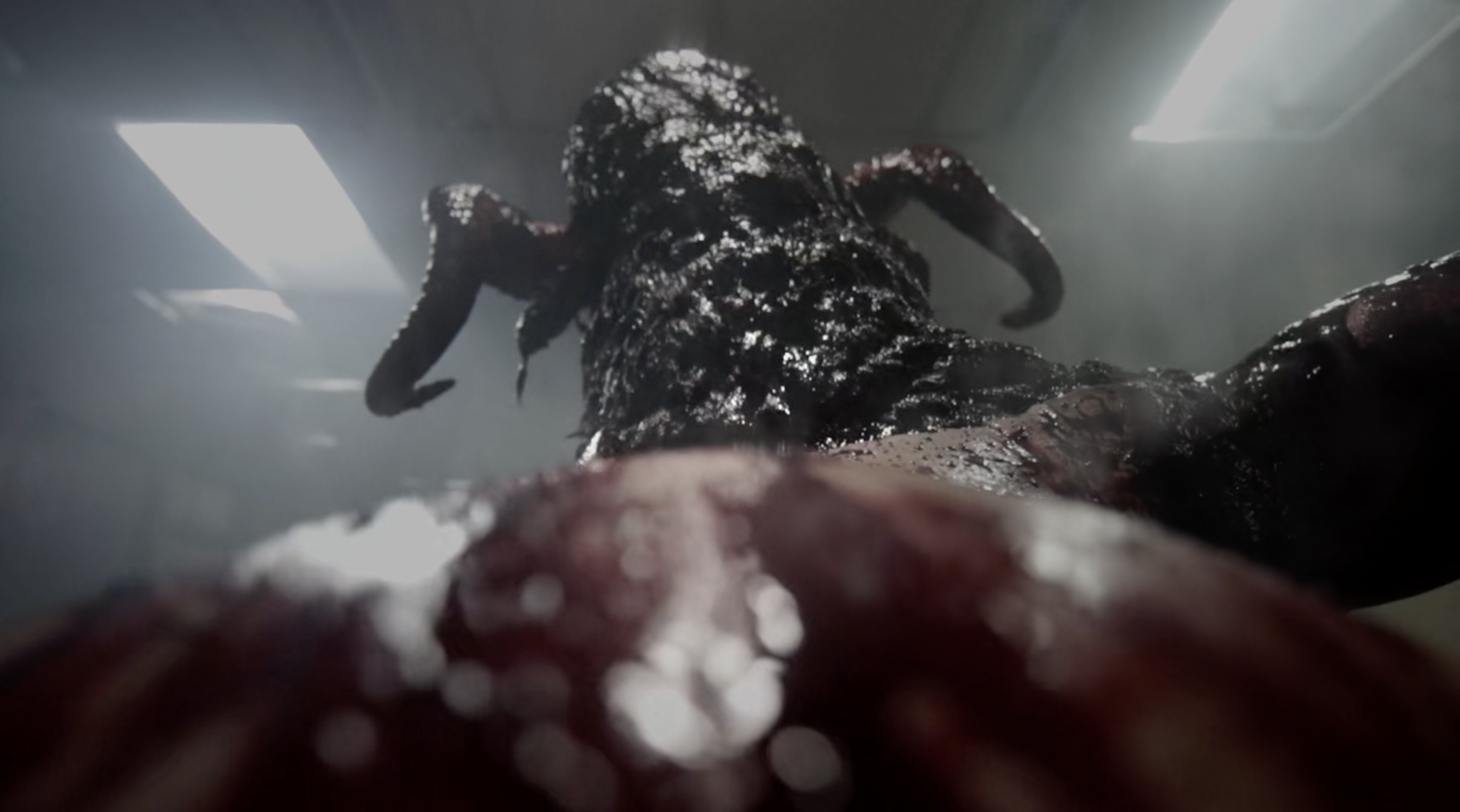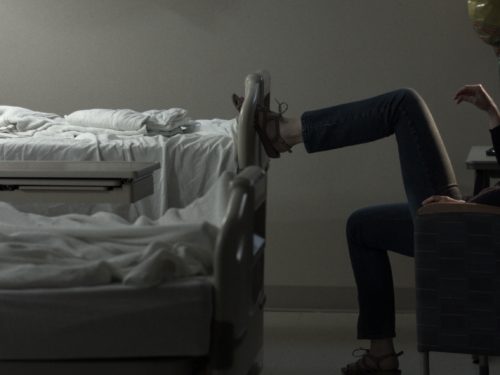Proctor, a multi-disciplinary artist, joins Split Tooth to discuss his cinematic inspirations and ever-evolving technique
Note: I should disclose that I’m not just a subscriber to Ultra Dogme’s Patreon but a past contributor to the site as well. That said, any bias evidenced here predates my debut for Ultra Dogme.
Whenever someone contemptuously spits out the words “film twitter” (and it happens all the time) I know for sure that they don’t follow Maximilien Luc Proctor or count themselves among the community of filmmakers and cinema enthusiasts who’ve emerged around Ultra Dogme. If you come to Twitter for discussions about mainstream blockbusters and the awards race, you’re bound for the same disappointment you’ll find if these films constitute the bulk of your cinema-going diet. Seek out Ultra Dogme, the writers it publishes, and the work it champions, however, and you’re in for something else. The site Proctor founded and co-edits routinely shares essential criticism and screens essential films. Like this site, I’ve come to count on it for the types of experiences and discussions that are increasingly rare in a shrinking media world and uneasy social media world.
Though his curatorial and critical work deserves attention, Proctor’s own films are among the best he has shared with Ultra Dogme’s readers and subscribers. Endlessly curious and committed to tapping each location, technique, or tool for its full cinematic potential, Proctor has produced some of the most interesting avant-garde films of the decade and distinguished himself as one of the most exciting active filmmakers of any sort. His diverse, thrilling body of work continues to grow.
Last September, Brooklyn’s Spectacle Theater hosted a two-night program of Proctor’s films. The screenings served as the NYC debut for much of the work. Films that impress on the small screen proved downright revelatory when soundtracked by the clack of a 16mm projector. Highlights included All the Best (2022), a film that finds Proctor testing out a new camera and whose rich, shimmering compositions suggest Christmas morning; the sound of the sky reflected in water (2021), whose reflections within reflections and pockmarked emulsion blend material and photographic wonders; and the feature Srećan Put (2021), which inventively captures the lives of an entire community of artists while retaining a singular diaristic quality.
Proctor and I started this interview by email last fall, shortly after the screenings at the Spectacle.
Bennett Glace: A recent interview opens with some discussion of films that have inspired you. You credit seeing Jeanne Dielman and Out 1 in 2015, for example, with encouraging you to direct what would become Fragments of a Memory of a Film (2017). In that same interview you describe directing from a young age. Was your earliest filmmaking the result of any youthful cinephilia?
Maximilien Luc Proctor: I wouldn’t really qualify my early interest in movies as cinephilia, but it definitely became clear by the end of high school that I had a lot of interest in what was out there and what was possible with the medium. At that point the films closest to my heart were probably Braindead (aka Dead Alive), Donnie Darko, Inception, Inglourious Basterds, Watchmen, Gummo, and Wes Anderson and Kubrick’s filmographies. Nothing really out of the ordinary. But 2015 was a big year for my cinephilia when I attended Berlinale for the first time, and then months later, Film Fest Gent for photogénie’s Young Critics Workshop. I came to realize just how many interesting filmmakers were currently working, and how little I actually knew about what was out there.
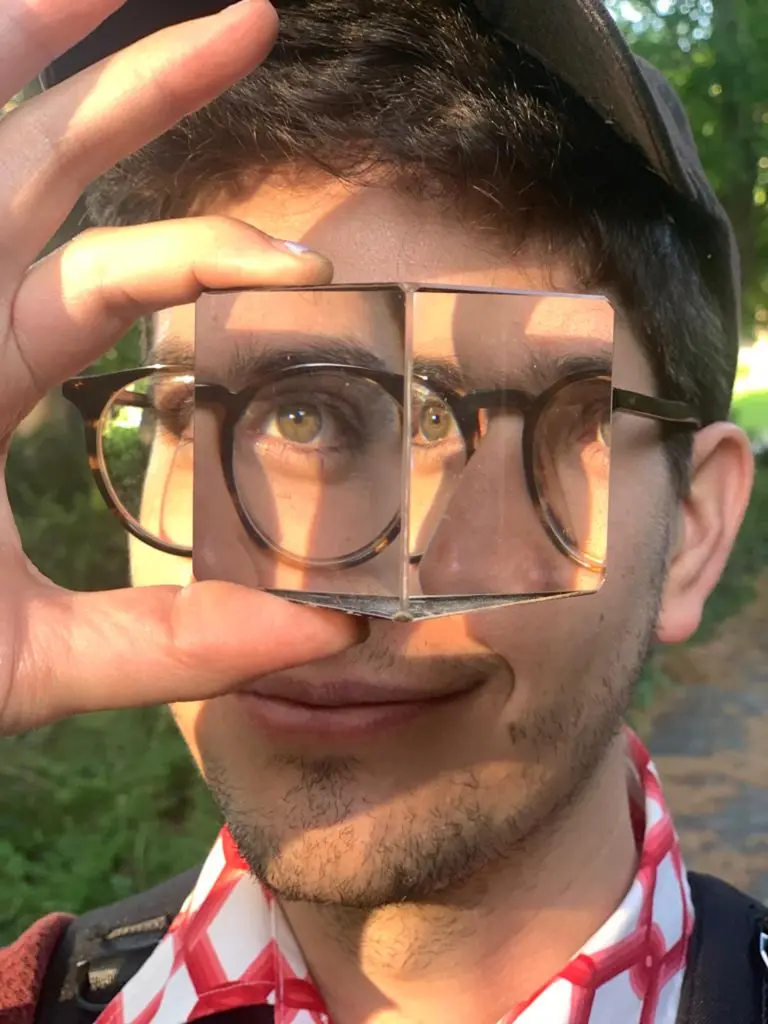
In a conversation with Scott MacDonald, Ernie Gehr talks about letting his mind and eyes wander in the cinema as a child, focusing on the light reflected from the projection booth and the cigarette smoke filtering through it. I’m wondering if that’s something you can relate to. Did seeing from the ‘untrained eye’ come naturally?
There was a bit of this going on, because what Gehr describes certainly evokes some of my adolescent film-going experiences. I remember a time when I was really obsessed with Kubrick’s signature slow zoom as being a sort of innate human impulse when operating a camera that offers the possibility of such a dramatic shift in focal lengths. I would be on the lookout for it in my early vignettes shot on the family camcorder, and felt its prominence most vividly in the vacation footage of a friend’s sibling that I once sat through. In college I briefly worked for an organization that filmed sports games. I have zero personal interest in sports, but for one soccer game I was operating a broadcast camera overlooking the field. It had two handles for steady pans and a thumb-operated zoom control. I had a field day, although I was terrible at following the ball. I had no idea what was going on in the game most of the time. At any rate, yes, I was very interested in the basics of looking and all of its various unusual phenomena from a young age. I also remember waking up slowly on some lazy Saturday as a child and squinting to look through one eye at a time, certain that the view from each slightly favored either a warm or cool tint to its palette.
You talked a little about your time at the University of Oklahoma in a conversation with James Benning. In particular, you mention learning to shoot on 16mm. What type of films did you see in class, and was there anything that especially challenged you or that has proven inspirational?
The professor for that class (Filmmaking I), did show us a handful of important films, chief among them Warhol’s Mario Banana and George Kuchar’s Hold Me While I’m Naked. Nothing that really hooked me immediately, although I am especially fond of Warhol as a filmmaker nowadays.
You characterize the period between Fragments of a Memory of a Film and Srećan Put as one of learning how to become a better filmmaker. It also coincides with the deeper immersion into experimental film that you say began in 2018. There’s a film called Practice from this time and I imagine the title has more than one meaning. What did this period of practice and study look like?
Practice was one of the last films I made in Heidelberg, before moving to Berlin at the beginning of 2017. I had moved to Heidelberg a couple years prior, in the fall of 2014. So my time there was mostly about figuring out my life and what to do after college. In a big way I’m still trying to figure it out, but things look far more promising now than they did when I first arrived in Berlin — or Germany, for that matter. The main thing about Heidelberg was that there was no real film culture there. I did find a few friends to collaborate with, but I was starved for any ‘proper’ screenings beyond the art house titles that would play in the three local cinemas. The town’s only multiplex closed during the time I was there, so we had to drive or take the train to the neighboring city of Mannheim to see stuff like Interstellar on a big screen.
If Srećan Put was a reset for your practice and approach, what changed?
After watching Srećan Put again while screening it at Spectacle last September, I came out of the experience deciding it is definitely time for another reset. But effectively what changed during the making of that film was that I slowly started learning how to be my own person, and I learned how to be more vulnerable onscreen. It’s a tricky balancing act to offer enough of your ‘self’ into a film, to a trusting audience, and to do so without going overboard, putting so much of yourself into it that it maybe becomes too much about the facts instead of the feeling. I think the main thing I learned in the process of making Srećan Put was how to just let things be upfront and simple when they need to be. Sometimes a metaphor is useful, but not everything should be metaphors, which I used to sort of believe, out of a fear of expressing vulnerability. Earlier this year I still thought my next feature would be a direct sequel. Now I think there will still be some kind of connections, but it will largely be a process of closing that chapter and figuring out the next thing.
The way you describe your filmmaking process can sound experimental in the truest sense, educational as well. Introducing Srećan Put, you say, “as with most of my work, this film is an exercise.” How do you feel about the term ‘experimental,’ and do you think it accurately describes your body of a work as a whole, or is it better suited to certain work in particular?
As a category, ‘experimental’ really ran up against a wall long before I was born. I don’t have much of a horse in the game. It seems that for better or worse, it’s what we’ve got. You can call them experimental, personal or artist films, avant-garde… nothing seems adequate to fully describe the massive and multi-faceted history that these terms are generally accepted to encompass. There has to be some kind of shorthand so people can at least get an idea of what type of filmmaking you’re referring to. But as with most words, they’re everything and nothing. Some filmmakers (Nathaniel Dorsky in particular comes to mind here) object to ‘experimental’ because they know what they are doing, and they make specific choices with great purpose. I do some of that too, but due in part to my limited experience, every roll of film is an ‘experiment’ in the sense that I’m never sure how it will come out until I get it back from the lab. So I’m fine with ‘experimental’ as a label.
Related: Read Bennett Glace’s overview of Ultra Dogme’s 2023 Ellie Epp streaming series
You’re not necessarily self-deprecating, but you do admit to shortcomings in earlier work. Are there approaches, techniques, or preoccupations from earlier in your career that you’ve definitely left behind?
Definitely. The medium has such a strong impact on the form and surface of any work, so my shift from primarily working with digital to focusing most of my energy on 16mm has meant what I think is sort of a dramatic aesthetic shift, just because the starting point of either is already so far from the other. It’s just always about working with the strengths of your medium.
Are you at all meta-textual in how you think about your films and their relationship to one another? Is there a broader narrative across your work or a thesis statement?
Yes and no. I tend to think of most avant-garde filmmakers’ bodies of work as a unified statement to varying degrees. It’s like auteur theory taken to an extreme degree: sometimes you almost need to be familiar with most of an artist’s previous films to understand where they are starting from with a new work. Watching such an arc unfurl over time can be breathtaking. I do try to approach each work as its own standalone title, but I maintain a vague consciousness of where it fits with what I’ve already made.
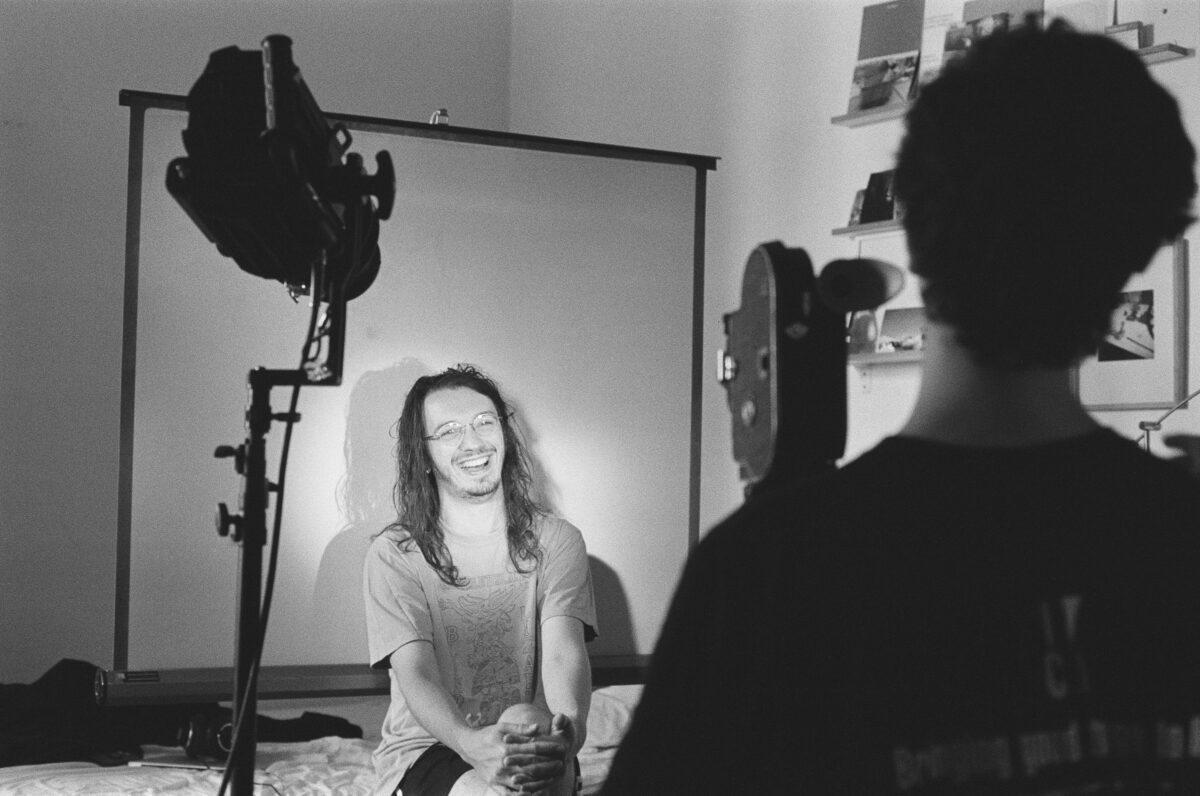
There’s a quote from James Agee that I love. He says, “The films I most eagerly look forward to will not be documentaries but works of fiction, played against and into and in collaboration with unrehearsed and uninvented reality.” Could you describe some of the ways you play against, into, and in collaboration with reality?
I’ve done my fair share of just filming things as I find them, but every selection of a specific framing is also an omission of images in the surroundings that I haven’t included. So I think it would be easy for someone to watch one of my films and think I just set up the camera and started filming without changing the environment first, which is often the case. But to take just one specific example: when my partner and I went for a walk to film a shot of what would become (against interpretation), I grabbed Susan Sontag’s Against Interpretation essay collection as we were leaving. It wasn’t that we just had it with us by chance. Yet it wasn’t exactly premeditated, and I didn’t yet have a title or anything in mind for the film. In a way, I think of every film as indirectly being about the tension between my own ideas and chance. I think this is true for most ‘experimental’ filmmakers, but being able to maintain that dance can be a real challenge at times. But it’s important not to have authoritarian control over every last thing that goes into the film. It’s enough to have the intention, carry it out, and allow for surprises.
How does fiction or narrative play into your films? I’m particularly interested in the ways it might creep into the ones without characters or scenes in the traditional sense.
I do love stories. I love following a good narrative thread sometimes. What I can’t stand is the way a claustrophobically specific and extremely limiting idea of what constitutes a ‘story,’ and what it’s allowed to be, has become institutionalized. What drives me up a wall is going to a major film festival to see some of the few interesting works that have been pushed into the corner, and there are giant banners and animated ads re-affirming that the festival is driven by a love of stories, when what they really mean is that they hate to think, they hate to be confronted with art which challenges anything about what they expect a ‘movie’ is or can be, and that they are going to program things that they trust will make money. Or at least those things used to bother me a lot more in the past, before I realized there are plenty of people out there who practice alternative methods so as to just bypass all that stuff completely.
There is a genuine hunger for more than what is on offer on the conventional streaming platforms and the writing published on Oscar-chasing blogs. It’s an obvious thing to note, but there’s really such a whole rich world of cinema out there — both in terms of experimental film and just generally looking outside of the western canon, trying to watch things made in all parts of the world instead of watching every single big (read: expensive) new movie made in the U.S. — that I would encourage everyone to just do their best to ignore the frivolous talk of ‘storytelling’ and pursue what interests them and keep an open mind and keep digging… you will never find it all! You will never run out of riches. Take your time and savor what you manage to find.
Do you ever draw influence or inspiration from more conventional modes, or are Hollywood and the Indie Industrial Complex purely something to react against? Something to ignore altogether?
Sure, of course I do. Most movies have something interesting in them, but it’s often just a question of deciding what will be worth spending our limited time on this Earth watching. For years I voraciously watched loads of stuff with the attitude that every film had something I could learn from it. But you reach a saturation point; diminishing returns. So now I just try not to watch things I think will mostly be a waste of time rather than an illuminating experience. Of course I watch some movies just to relax and let go of my day, but I’m definitely more selective in general, and watching fewer movies overall. I try to keep an open mind and let ‘mainstream’ titles surprise me, and occasionally they will draw out an unexpected idea from a very indirect, small thing. Like when something is just sloppily or boringly made and it provokes a consideration like, ‘what if I took that tiny element to an extreme?’ And even if I were only ignoring it, that would be its own kind of inspiration. What can I say, we’re all wrapped up in all of it. An artist can never live outside of their own time or society, try as some might.
Can you tell me about some of your collaborators and the role of collaboration in your filmmaking?
It’s a slightly tricky one because I rarely make films in a direct and equal collaboration. It’s often me with a camera just asking a friend to be on screen or perform some kind of action that I would need more hands to be able to do by myself. Nonetheless, they always bring something of themselves to the task, no matter how small — I’m thinking here of Ruairí jittering the foil in Fluid Fragments. Srećan Put is definitely the best example of something like a ‘proper’ collaboration because Martin Bremer, Valentin Duceac, and Balaji Govindarajan were game to just show up and be on camera with very little (and sometimes no) direction. They’re all naturals in their own ways.
But in terms of films shot on the Bolex, I am slowly gravitating towards having people on camera more often. Despite this slowly developing tendency, my most recent work, Seasonal Concerns, was made alone and stars statues. I tend to oscillate between modes. That said, I should mention that my most important collaborators are the six friends who pooled their money to buy me a Bolex: phili c., Christian Flemm, Malkah Manouel, Ruairí McCann, Martin Bremer, and Florian Weigl. All the Best is dedicated to them because without them most of my recent work would not be possible.
Two of your shortest films are remakes of a sort, drawn from works by Ken Jacobs. Another, as i was moving ahead occasionally i saw brief glitches of beauty, pays tribute to the similarly named Jonas Mekas film with both new footage and reframing of existing footage similar to what’s seen in the Jacobs films. Are there other examples of conscious attempts to remake or respond to existing films in your body of work?
The only one that comes to mind is Monstera for Bernard, a 25-second ode to Joseph Bernard’s Variant Chants and his use of the color green in that film. The next conscious homage I’m considering is a film version (whatever that ends up meaning) of Rembrandt’s Self-Portrait at the Age of 34, but I’ll either have to wait two more years or just change the number.
Even in experimental film, the viewer brings certain expectations. Is the desire to subvert audience expectation something you think about?
It used to be something I thought about constantly. Now I just try to follow through on ideas as they come and make films I like.
A number of your recent works are shot on expired film: Winter Flare on A40, Snowing on Kodachrome, Self + Shadow on various Super 8 stocks. Talk to me about working with expired stock. I can’t imagine it’s just a matter of working with what you’ve got.
Initially the financial aspect was a large draw. I just wanted to shoot on film and it didn’t matter what gauge or if it was expired or color or not. Super 8 is a little cheaper than 16, and the cameras were certainly a lot easier to find cheap and in good working order than 16mm cameras. The idea that you are ‘recycling’ old material that would simply become waste otherwise is a nice one as well. The trade off is that if the material was not kept refrigerated for all those decades, then there is a risk that the image won’t come out clean, or sometimes at all. After that happened a few times I moved away from buying expired film on ebay. However, Christian collects expired 16mm which has been kept in good condition (usually frozen for decades), and once I shot on some of that, I realized expired film can really be a goldmine, even for ‘clean’ images — every stock has its own subtleties. I think every 16mm roll I’ve shot since 2022 has been an expired roll. I’m particularly fond of EXR 50D, which I used for All the Best and Seasonal Concerns. The color feels especially rich and full to me on that stock.
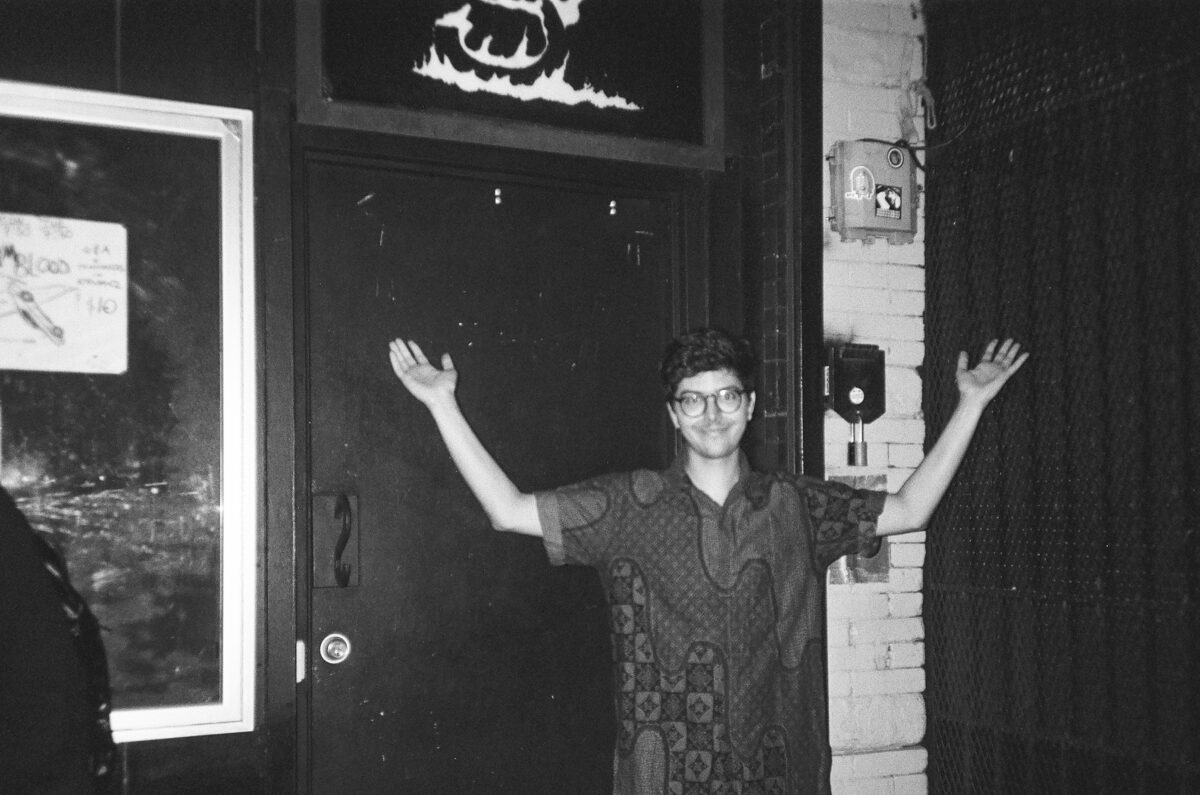
What gives you hope for the future of cinema?
People like you caring that it continues to exist. Seeing a younger generation start making really interesting work (Antoni Orlof, Park Kyujae) and seeing people around my age start to get the recognition they so deserve, like Blanca García, Jorge Suárez Quiñones Rivas, Ewelina Rosinska, Bram Ruiter, and Francisco Rojas. As long as there are people willing to look away from what is advertised at us incessantly and take an interest in human-made moving images, there is hope for the future of cinema.
Explore Ultra Dogme’s latest film and music writing
Subscribe to Ultra Dogme’s Patreon to gain access to monthly streaming programs and exclusive articles
Stay up to date with all things Split Tooth Media and follow Bennett on Letterboxd
(Split Tooth may earn a commission from purchases made through affiliate links on our site.)

